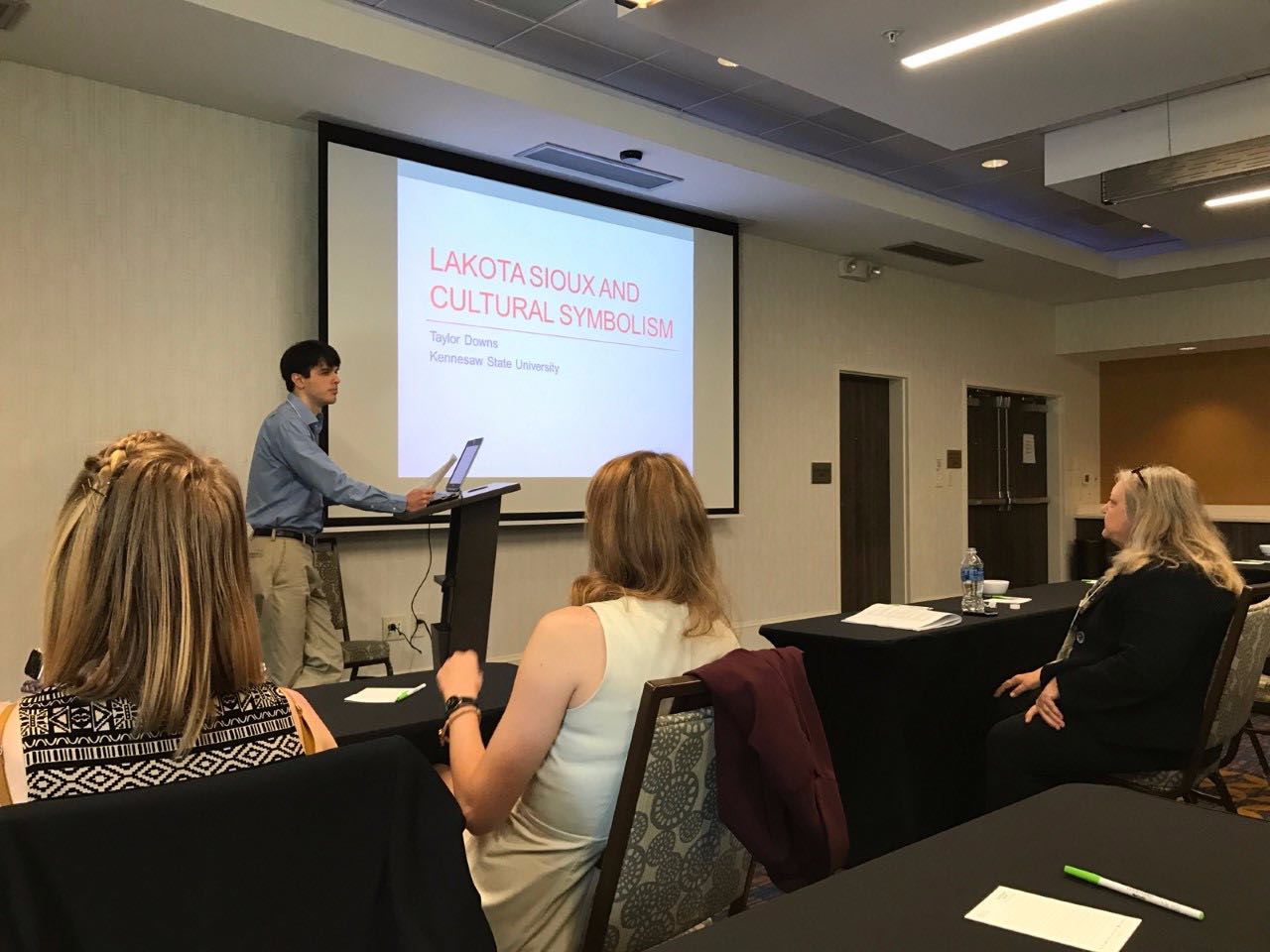Kennesaw State doctoral student Taylor Downs was recently awarded with Best Paper at the 2018 Association for Research on Nonprofit Organizations and Voluntary Action Conference held in Austin, Texas.
Downs, studying International Conflict Management at KSU, said that his paper, “Understanding Internal Social Movement Differences and Framing in the Movement Against the Dakota Access Pipeline,” examines how indigenous organizations were impacted by the increased presence of environmental organizations in the protests against the Dakota Access Pipeline back in 2016-17.
Downs said that he appreciated that accomplished scholars viewed his paper on the protests as valuable.
“It was a very welcoming surprise. This was my first national conference and I was a little nervous about presenting my paper to an audience that was a lot more knowledgeable about my topic than any I’d spoken in front of before.”
Downs drew his inspiration for this paper on past experiences. His father is a professor whose specialties include the history of American Indians. Growing up, Downs would attend gatherings, and he was able to see Lakota activist Russell Means speak at Georgia Southern.
Down’s paper delves into the events of 2016 when the Standing Rock Sioux and environmentalists gathered at the Standing Rock Indian Reservation in parts of North and South Dakota to protest the construction of a 1,172 mile long pipeline, of which the Sioux tribe and environmentalists were opposed to because of the pipeline being built on sacred Sioux burial grounds and the potential of water becoming contaminated.
The movement was often referred to as #NoDAPL and the slogan was “Water is life.” Downs studied both the indigenous and environmentalist sides of the conflict and analyzed what he calls the “master frame of the movement.”
Downs came to the conclusion that between the indigenous and environmentalist protesters, the overarching theme came down to water. He studied the impact of one social group on another, looking to see if indigenous organizations were influenced by the environmentalists’ increasing presence at Standing Rock.
What made covering this topic stand out to Downs was the level of support the movement received. National and international groups allied themselves with the struggle at Standing Rock, compared to past differences in indigenous-initiated protests, as those movements received little to no support.
Downs was able to hold interviews with a few who were involved in #NoDAPL, although it was just to gather context of the movement. Downs said that this paper was a precursor to his dissertation, which will be a more in-depth study of the movement and will include interviews with indigenous and environmental activists.
When asked about what he hopes to accomplish in the future, Downs noted that he hopes his future research will be used by organizations both large and small “to better understand how to navigate different dynamics and structures within social movements, especially when it comes to indigenous and environmental groups.”
“I hope indigenous groups can utilize the same research to maximize their messaging and support in future movements, bringing more attention to indigenous issues that are sometimes overlooked,” Downs said.

